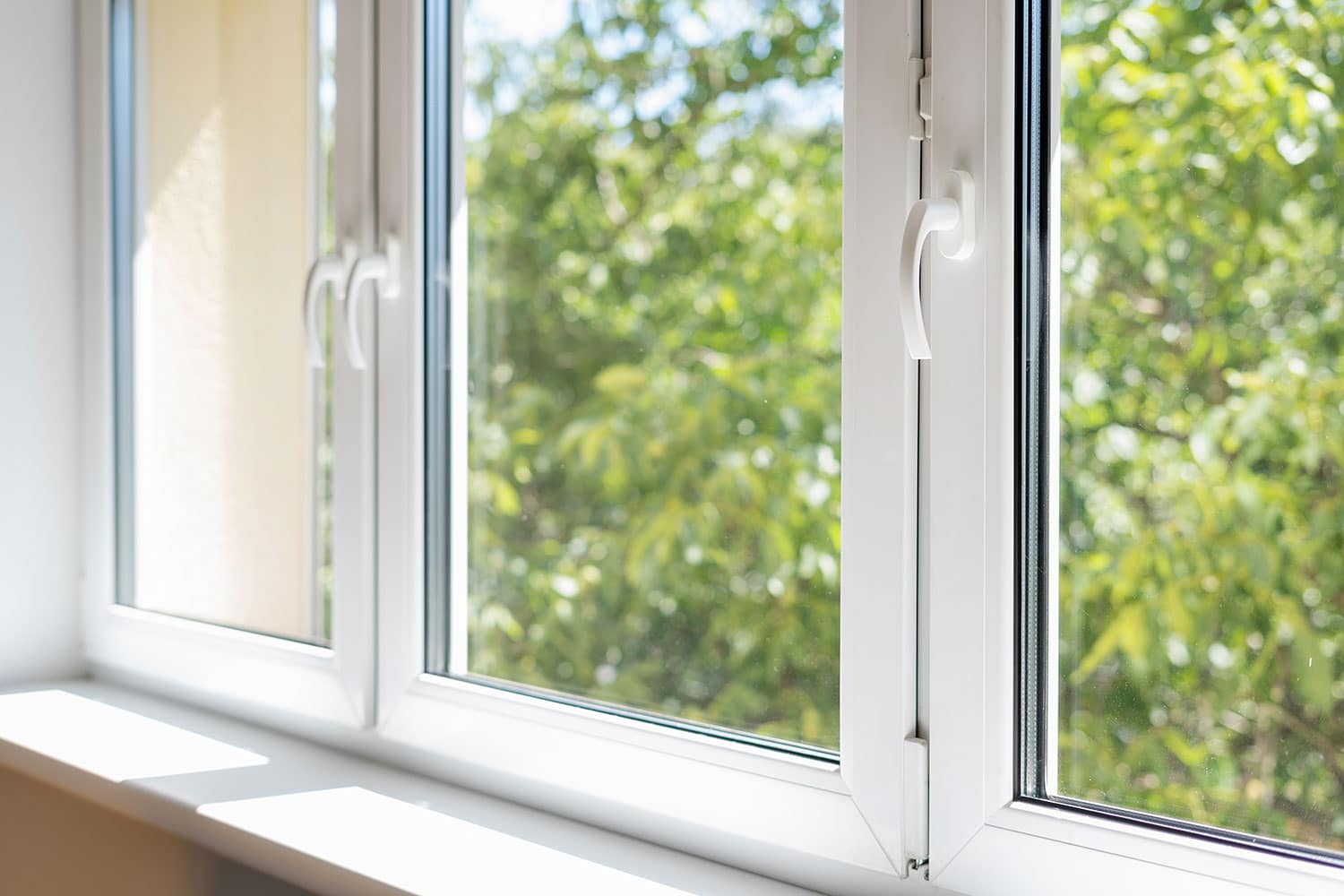Easy to maintain whilst presenting a stylish and timeless look, there are a number of ways to clean uPVC windows and ensure they are looking pristine for years ahead.
How To Clean uPVC Window Frames
For the inside of the frame, the first step to carry out is to clean the hinges by opening the window to the point of resistance to get inside the hard-to-reach areas. Then, use a vacuum to draw out any build-up of dust that may have collected around or inside the hinges, followed by brushing all the corners of the frame with a vacuum attachment to remove any excess.
Following this mix mild soap and warm water together to wipe down the inside of the window frame with a soft cloth, and finally, use a couple of multi-purpose oil drops to lubricate the hinges so that they don’t become rusty.
As for the frame itself, use a soft cloth or brush to remove any dirt or dust and then hose down if possible for a complete wash. Then using warm soapy water or a dedicated window cleaner, wipe down the outside of the frame with a material that won’t scratch the surface. To get a gleaming finish with your windows, use a dedicated window spray for just the glass and clean with kitchen roll or an old newspaper.

How Often Should You Clean Them?
For external glass, it’s recommended that uPVC cleaning takes place every four months and once a month for the internal glass. However, if you feel that you need to increase your uPVC window cleaning time due to a build-up of dirt then adjust your schedule as necessary.
What Not To Use On Your uPVC Window
There are a number of chemicals and materials that should not be used when cleaning your windows are they can cause damage to the overall look and protection of the frame.
This includes items such as steel wool or scouring pads when wiping down your windows, as well as not using glass cleaner on frames, cream cleaners, scouring powder, bleach, methylated spirits, white spirits, WD40, caustic or ammonia-based solutions. Double-check the label on the bottle when cleaning, and also remember that cellulose thinners can also melt the plastic.
How To Clean uPVC Window Sills
Depending on the severity there are two options to choose from when looking up how to clean uPVC windows. The first is to use a hot water soap solution wiped down with a soft cloth. The second option is to try vinegar. The mixture consists of one cup of vinegar to four cups of water in a spray bottle. Once applied leave for 10 minutes and then wipe down with a dry cloth. Whilst you think bleach or white spirits may help, it won’t, as this can turn white uPVC brown.
How To Clean Mould Off uPVC Windows
Sash window cleaning differs depending on what material frame you have, but there may come a time when you have a build-up of mould that needs to be removed. The most effective way to get rid of unwanted mould is by applying white vinegar and leaving it to soak for an hour so that the mould is given a chance to break up. Using warm water, scrub away the vinegar and mould, then wipe down the surface and leave the area to dry out by opening some windows to let the smell out.
How Can You Get Your uPVC Window Frames White Again?
Window frames can be damaged if a rough material or incorrect chemicals have been used to clean up dirt and mould. Sadly there isn’t much you can do to reverse this, and that’s also true if cheap uPVC windows have been installed and are decaying with time and turning a yellow colour. However, the vinegar and water mixture above can save window frames and potentially turn them white again by leaving the substance on for 10 minutes and wiping it down for a fresh look.
For More Information?
Here at Crystal Clear, we care about quality, and your experience. We know that not every window or door is made the same, and that they require different methods of maintenance in order to give them the best care over the course of their life. Check out our section of maintenance guides to help prolong the life of your door or window.
Please never use any penetrating sprays such as WD40 or Double TT.
We recommend the use or 3 in 1 oil, spray oil, light grease or silicone spray to lubricate your moving parts.